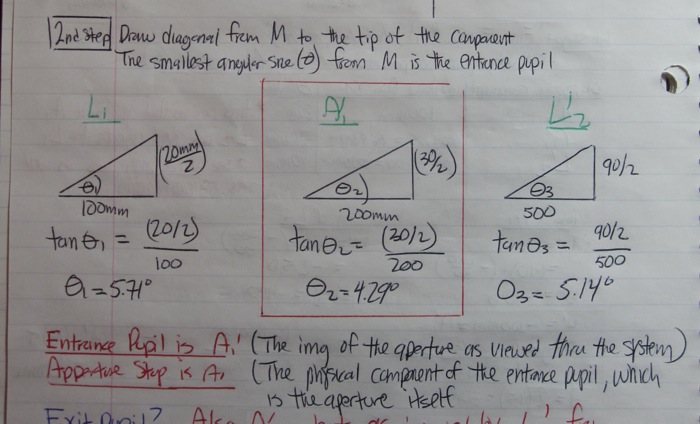Having spent only one week on optics in my undergraduate physics course, I was apprehensive to face the subject during my entire first year in optometry school. Shortly before our first lecture in our optics course, I received the syllabus. Actually, I studied the syllabus, as we had a quiz on it in our first class meeting …Yeah, welcome to optometry school.
On the syllabus, the instructor informed us we would be using a learning method called Team-Based Learning (TBL). TBL is a program designed to deviate from the traditional student/teacher interaction into a predominantly student/student interaction. While traditional courses often have lectures and some class discussion, TBL primarily features in-class teamwork or team assignments. After the quiz on the syllabus, our class of 130 was split into 22 teams of 5 or 6 students, and this is the team each student will work with for the remainder of the semester. These diverse teams are formed by the instructor with respect to certain student traits, such as being an undergraduate tutor or taking an optics course in undergrad.
As students, we watch and take notes from a short, online lecture supplied by the instructor before each class period. Sometimes we will have a short, multiple-choice quiz, called a Readiness Assurance Test (RAT), on the material from this online lecture in the opening minutes of the class period that we will take individually. This is to ensure that we are prepared to take the material into a higher order thinking level. Yet, still the focus of TBL is on peer-led studying since we review the online lecture material in our group for five minutes before the RAT and then take the same RAT as a group after individually finishing it. We use a scratch-off sheet when working through the RAT as a team for immediate feedback on our level of understanding, which is best illustrated in a video from a link provided at the end of this article. Additionally, if a team decides that a question is ambiguous or the answer is incorrect, the team can provide a written appeal to gain points back from the question.
On days when we do not have RATs, we have team assignments. These are prepared by the instructor and given to us when we arrive for class. Our instructor is able to keep the entire class of 130 working on the same problems throughout the class period by giving us needed information on each question after each team has completed the previous question. When each team thinks they have the correct answer, one team member of each group holds up a colored sign that has the letter A, B, C, D, or E (where A is red, B is blue, etc.). When the instructor counts to three, sometimes we all look like an ocean with our blue signs and other times we might look like a rainbow. Our instructor then asks a team at random to explain why they chose their answer. This is to ensure that we are thinking through the problems correctly and focusing on the process, rather than just getting the correct answer, which is why all the teams work the same problems simultaneously throughout the class period. Whether we all get the correct answer or not at the end of a team assignment question, the instructor always welcomes questions from the class. If he explains how to solve a problem or understand a concept at this time, it is one of the few instances when our lecture period is truly a lecture.
Our final course grade is dependent on our individual assessments (individual assignments, quizzes, and exams) and team assessments. Team quizzes and assignments comprise 8 percent of our final grade in optics, and the team grade can be altered from peer evaluations that each team member completes on each other.
By centering the course on peer-led learning, we are able to hear different perspectives of working a problem or understanding a concept. By exploring the different methods of working a problem, each student can find what works best for them. Similarly, some students have a way of explaining concepts with such clarity and confidence that other students can comprehend better. In courses such as optics, with its difficult problems and challenging concepts, it seems to take a village to understand it, and that is what we have done in our optics course.
It takes a very dedicated and structured instructor to make sure our class meetings go smoothly, and my instructor coordinates the course very well. I am unsure how well TBL would work for all courses, but I am certain that I would never have learned optics this well in a traditional lecture format. For more information on TBL, visit their home website at http://www.teambasedlearning.org; or watch this informative introductory video at http://www.utexas.edu/academic/ctl/largeclasses/#tbl>.
Feel free to comment below with your Facebook, Twitter, Google or Disqus account.


